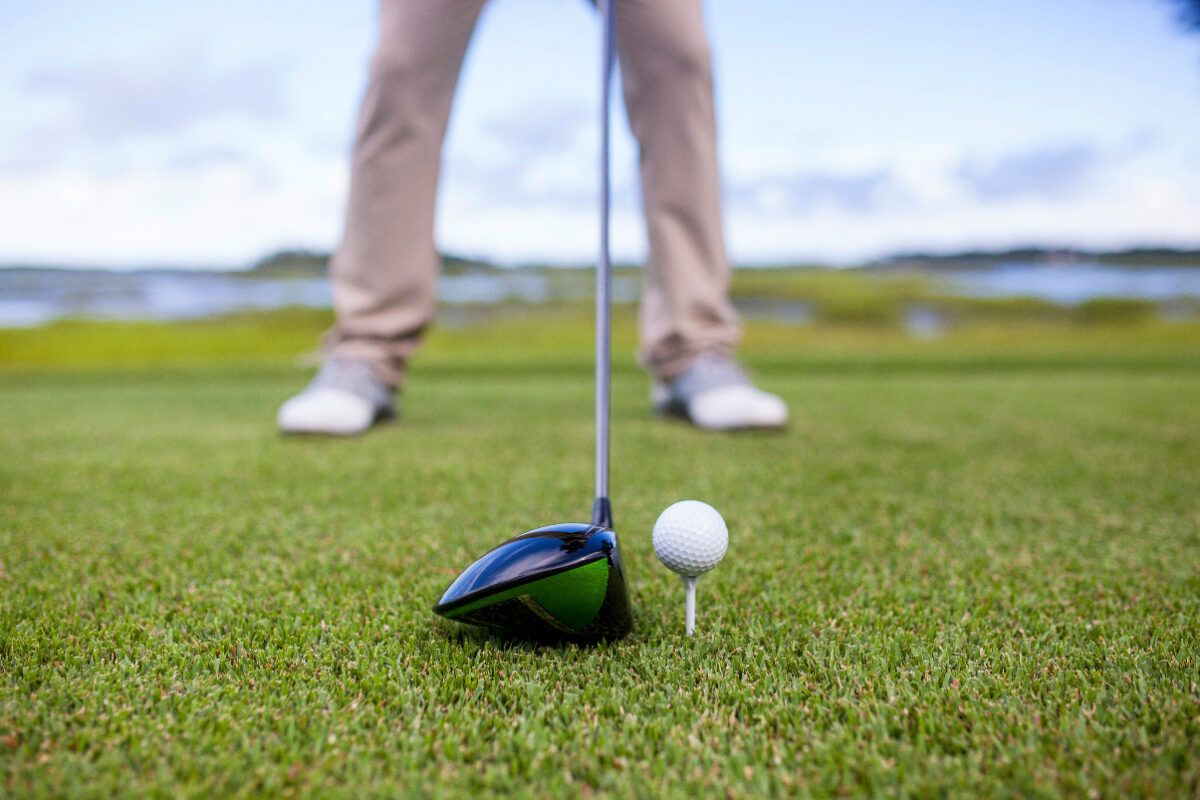Why Do Professional Golfers Stand So Close to the Golf Ball?
Watching pro tournaments, viewers frequently notice top players addressing irons and wedges by positioning their feet extremely close to the golf ball at address.
This setup position differs greatly from most amateurs. So why do professionals adopt such proximate foot placement and stance widths?

Minimizes Variability and Errors
Standing closer with a narrower stance reduces inconsistencies and eliminates issues like exaggerated swaying, overswinging, and shifting weight improperly. Keeping feet nearer controls extra motion.
Promotes Consistent Ball Striking
Proximity to the ball forces pros to focus on core body rotation rather than handsy maneuvers further away. This engrains sound technique. Closer foot lines simplify impact.
Adjust Stance Width Based on Club Selection
Stance widths incrementally narrow as pros hit shorter clubs from wedge through 5 iron. Driver and fairway woods allow wider stances. Adjust per club for balance.
Weight Favors Lead Side
With feet closer together, elite players can redistribute weight onto the lead foot and consistently contact shots leaning forward. A narrow stance still allows coiling.
Lower Body Stability
Closer feet demand disciplined lower body balance and resistance to swaying backward. Limited motion develops solid coil and transitions without excess lateral movement.
Synchronizes Upper and Lower Body
Compact foot positioning instills proper upper/lower body synchronicity. Short swings correlate with tighter foot alignment and less dipping.
Easier to Turn Against Front Leg
With feet nearer together, resistance from the lead leg during the backswing loads into a powerful clearing through impact. Enhances shot consistency.

Ball Positioning Ties to Stance Width
Ideal ball position correlates with stance width. Wider stances move the ball back. Closer feet set the ball farther forward. Varies by pro preference.
Minimizes Reverse Pivot
Preventing excessive upper body leaning backward starts with a stance not permitting it. Compactness keeps the right arm connected and rotating fully.
Maximizes Swing Efficiency
Proximity promotes minimal effort swings utilizing body forces and structure over complexity. Simpler motion couples with balance for efficiency.
Consistency Under Pressure
Narrow, compact swings tolerate pressure better and reduce moving parts that induce anxiety. Rhythm endures over intricacy.
Iron Play Dictates Stance Width
Since iron play precision matters greatly in professional golf, setups cater to maximizing ball striking consistency with repeated narrowed stances.
Harder to Sway Off-Balance
Excessive swaying during the swing frequently causes poor footing and balance issues. Tighter stance width provides no room for disjointed footwork.
Easy Weight Transfer
Rotating weight between the front and back feet requires less lateral motion with a compact stance. Energy transfers purely through turning.
Keeps Hands and Club Closer
Minimal space between hands and body at address keeps the swing compact and on a plane. No separation from the torso.
Less Erratic Footwork
Some amateurs struggle with keeping their feet settled during backswings. A closer stance removes extra shuffling room.
Forces Maintaining Posture
Dropping posture commonly creeps into wider stances. But proximity demands proper spine angles and balance throughout the motion.
Emulating Elite Player Technique
While pros naturally develop repeatable mechanics, amateurs can train muscle memory through practice in narrowly aligned, upright setup positions.
Find Your Own Ideal Stance Width
No singular width works universally. Test incrementally narrower stances with irons while monitoring consistency to determine optimal foot positioning for your swing and physique.
In summary, professional golf instruction stresses the importance of compact, minimalist stance width and proximity for iron play.
Limiting stance assists in synchronizing components for efficiency. But defining ideal foot alignment requires personalized testing to ingrain sound mechanics.
Narrowertoward the ball promotes technical quality, centeredness, and control. Mastering fundamentals sometimes necessitates unlearning counterproductive habits.
